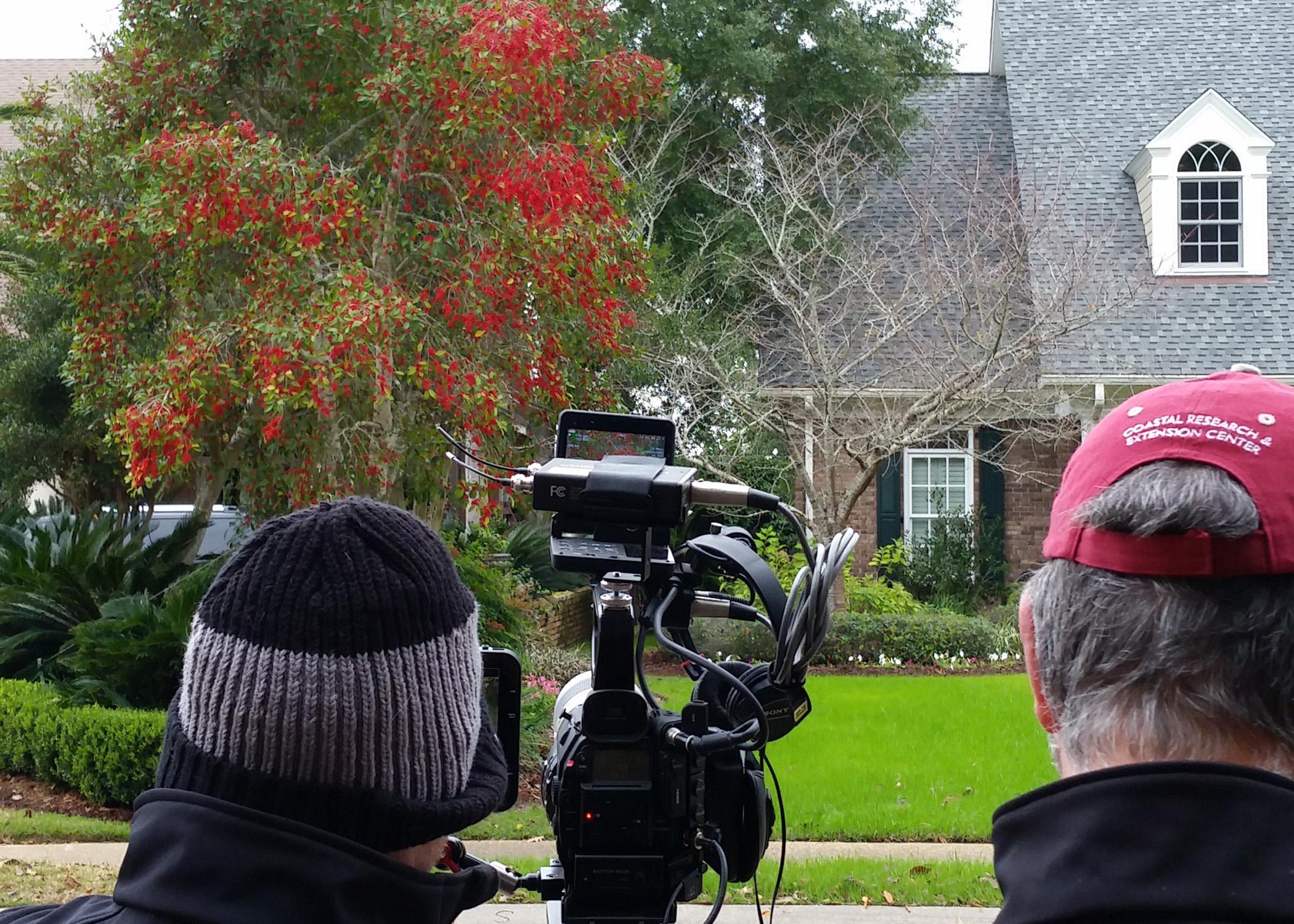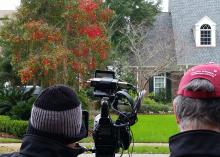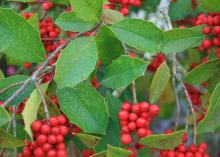Information Possibly Outdated
The information presented on this page was originally released on December 7, 2015. It may not be outdated, but please search our site for more current information. If you plan to quote or reference this information in a publication, please check with the Extension specialist or author before proceeding.
Savannah holly produces outstanding berry color
Driving around Mississippi’s coastal counties has reminded me that we are in the middle of the red berry season. Yaupon hollies have translucent red berries that sparkle like landscape jewels, and Nellie R. Stevens have dark, glossy-green foliage that provides the perfect background for bright-red berries.
But another landscape holly has been a favorite of mine for many years, and it also is outdoing itself this year with branches weighed down from the fruit load. Savannah holly has been so outstanding this season that we recently spent a couple of days completing a Southern Gardening TV segment just concentrating on this great plant.
Savannah holly is a superb and versatile evergreen to grow in our Mississippi gardens and landscapes. It normally has a natural pyramidal growth habit that is loose and open. These plants are moderate-growing large shrubs or small trees with the potential to reach up to 35 feet tall. They make great screens or great landscape specimens.
Savannah holly is a hybrid of two of our native hollies, American holly and dahoon holly. In summer, the foliage of Savannah holly is typically a dull light green. The leaf margins have soft spines of varying numbers on each leaf, which is representative of the American holly parent.
When grown with other hollies that have dark glossy-green foliage like the popular Nellie R. Stevens holly, the Savannah holly can look like it lacks chlorophyll, but the foliage color is perfectly normal. The foliage may become a bit yellowish-purple or be tinged with red during the winter when exposed to lower temperatures. Its heavy berry production can lead to leaf yellowing called chlorosis.
The berries can be a real show stopper from November through March. The tight clusters of berries are formed towards the ends of the branches. The berry color is reminiscent of fluorescent red, and they are a quarter-inch or more in diameter. The plentiful berries are a favorite winter delicacy for birds. It is a treat to sip coffee on a cold morning and watch bright-red cardinals plucking Savannah holly berries.
All hollies are dioecious, meaning “of two houses,” with male and female plants. Both male and female trees produce small white flowers in the spring, but the flowers are inconspicuous. For good berry production, both sexes must be nearby. It is a good thing that native American hollies commonly found across the state can provide pollination for the Savannah holly and other fruiting hollies.
To be sure of the best berry production, consider planting a pollinating companion plant with your Savannah holly. A good choice is Jersey Knight, which is a male American holly selection.
Savannah holly will tolerate almost any well-drained landscape soil. Just be sure not to plant too deeply, keeping the top of the container even or slightly above the native soil. These plants are also tolerant of confined root zones because of their roots’ small diameter and great number.










